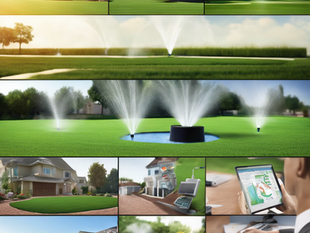
How to Install Low Voltage Landscape Lighting Systems Professionally
Aug 8, 2024
2 min read
0
1
0
In the realm of outdoor design, one element can truly elevate the aesthetics and functionality of a space: landscape lighting. Installing a low voltage landscape lighting system is a meticulous process that, when done professionally, can enhance the beauty of any outdoor area. Professionals in the landscaping industry understand the impact that well-designed and expertly installed lighting can have on a property, making it not only visually appealing but also safe and inviting. Let's delve into the essential steps and tips to install low voltage landscape lighting systems like a pro.
Understanding Low Voltage Landscape Lighting
Before delving into the installation process, it's crucial to grasp the basics of low voltage landscape lighting. These systems operate at a lower voltage than traditional lighting, typically at 12 volts, which not only reduces energy consumption but also enhances safety, making them ideal for outdoor settings.
Step-by-Step Installation Guide
1. Planning and Design

Conduct a thorough assessment of the outdoor space to determine key areas that require lighting.
Create a lighting plan that includes the type of fixtures needed, placement locations, and desired lighting effects.
2. Selecting the Right Fixtures

Choose high-quality fixtures that are durable and weather-resistant.
Opt for fixtures that complement the overall design scheme of the property.
3. Installing the Fixtures

Carefully position the fixtures according to the pre-determined lighting plan.
Ensure that fixtures are securely installed and wiring is safely connected.
4. Wiring and Transformer Installation
Bury the low voltage wiring at a depth of 6-8 inches to prevent exposure and potential damage.
Install a transformer to convert standard voltage to low voltage for the lighting system.
5. Testing and Adjustment
Test each lighting fixture to ensure proper functionality.
Make adjustments to the positioning and angles of fixtures as needed to achieve the desired lighting effects.
Expert Tips for Professional Results
Layered Lighting: Incorporate a mix of lighting types, such as path lights, spotlights, and well lights, to create depth and dimension in the landscape.
Use LED Bulbs: Opt for energy-efficient LED bulbs that provide bright illumination while consuming less power.
Avoid Overlighting: Balance the lighting design by focusing on key features and avoiding excessive illumination that can detract from the overall ambiance.
Maintenance: Regularly inspect and clean fixtures to prolong their lifespan and ensure optimal performance.
Conclusion
Installing a low voltage landscape lighting system professionally requires a keen eye for design, technical expertise, and attention to detail. By following the steps outlined in this guide and incorporating expert tips, landscaping professionals can create stunning outdoor environments that shine both aesthetically and functionally. Whether illuminating pathways, highlighting architectural features, or accentuating greenery, the art of landscape lighting adds a new dimension to outdoor spaces, transforming them into inviting and enchanting settings.
Let your expertise in outdoor landscape lighting shine bright, guiding the way to beautifully illuminated outdoor spaces!





